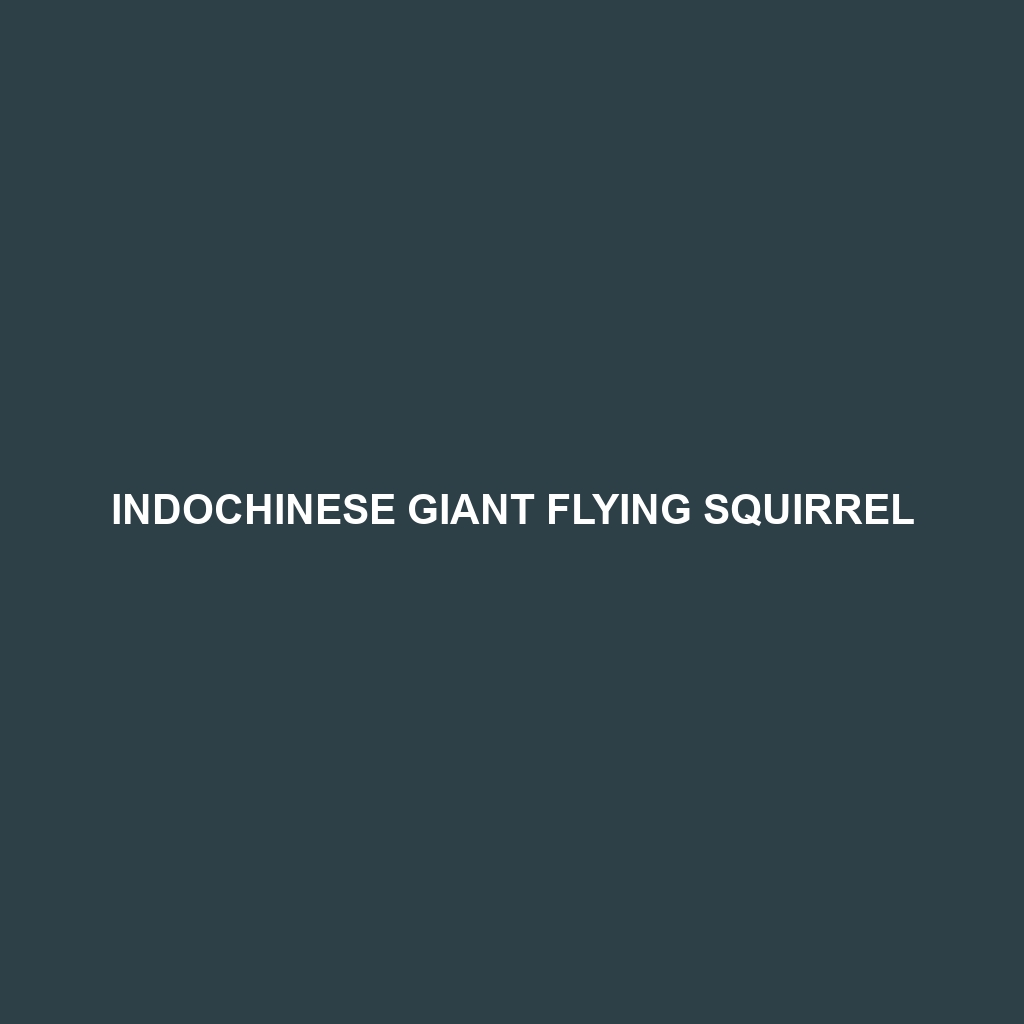Indochinese Giant Flying Squirrel
Common Name: Indochinese Giant Flying Squirrel
Scientific Name: Petaurista philippensis
Habitat: The Indochinese Giant Flying Squirrel is primarily found in the lush tropical and subtropical forests of Southeast Asia. This species inhabits dense mountainous regions, specifically found in countries such as Thailand, Vietnam, Laos, Myanmar, and parts of southern China. It prefers habitats with abundant tree canopies, particularly favoring old-growth forests that provide ample space for gliding and foraging.
Physical Characteristics: The Indochinese Giant Flying Squirrel is one of the largest species of flying squirrels, measuring about 50 to 60 centimeters (20 to 24 inches) in body length, with a tail that can be equally long. Its fur is dense and soft, usually exhibiting a grayish-brown color with a slightly lighter underbelly. This species has large eyes adapted for nighttime activity, and its broad, membrane-like patagium allows for impressive gliding abilities. Distinctive features include long whiskers and large, rounded ears that enhance its sensory perception in the dark.
Behavior: Indochinese Giant Flying Squirrels are primarily nocturnal, meaning they are most active at night. They demonstrate social behavior, often found in small family groups. Their gliding ability enables them to travel long distances between trees in search of food and to escape predators. They communicate through various vocalizations, including chirps and barks, especially during mating season. This species is also known for creating nests in tree hollows or dense foliage.
Diet: The diet of the Indochinese Giant Flying Squirrel is predominantly herbivorous, consisting mainly of leaves, fruits, nuts, and seeds. They play a vital role in seed dispersal through their feeding habits, which encourages forest regeneration. Additionally, their preference for high-quality forage leads them to select specific tree species that yield nutritious food sources.
Reproduction: The breeding season for the Indochinese Giant Flying Squirrel typically peaks during the dry season, with gestation lasting about two to three months. Female squirrels usually give birth to one or two offspring per litter, which are born fully furred and with their eyes closed. Maternal care is significant, as the mother nurtures her young and teaches them essential survival skills during their early months.
Conservation Status: Currently, the Indochinese Giant Flying Squirrel is listed as “Near Threatened” by the International Union for Conservation of Nature (IUCN). This status is due to habitat loss from deforestation and fragmentation, which pose threats to their population numbers. Preservation of their natural habitats is essential for ensuring the survival of this unique species.
Interesting Facts: One fascinating fact about the Indochinese Giant Flying Squirrel is its ability to glide up to 150 meters (490 feet) from tree to tree. They have specially adapted limbs that allow for a controlled descent and maneuverability in the air. Additionally, their nocturnal adaptations make them a subject of interest for researchers studying the evolution of sensory capabilities in mammals.
Role in Ecosystem: The Indochinese Giant Flying Squirrel plays a crucial role in the ecosystem as a seed disperser. By consuming fruits and nuts, they help spread plant seeds across large areas, promoting biodiversity and forest health. Furthermore, they are an essential prey species for various predators, contributing to the balance of their ecosystem.
